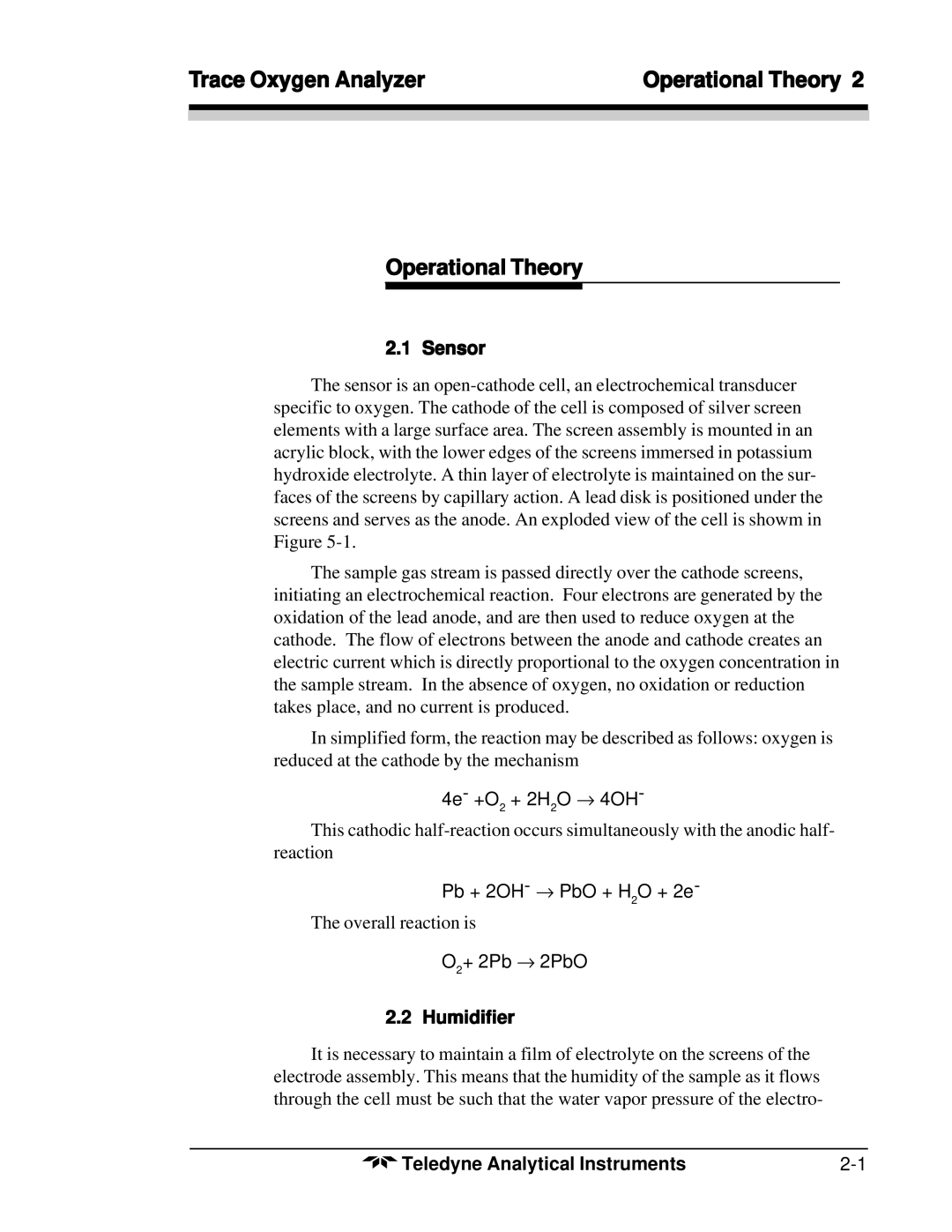
Trace Oxygen Analyzer | Operational Theory 2 |
|
|
|
|
Operational Theory
2.1 Sensor
The sensor is an
The sample gas stream is passed directly over the cathode screens, initiating an electrochemical reaction. Four electrons are generated by the oxidation of the lead anode, and are then used to reduce oxygen at the cathode. The flow of electrons between the anode and cathode creates an electric current which is directly proportional to the oxygen concentration in the sample stream. In the absence of oxygen, no oxidation or reduction takes place, and no current is produced.
In simplified form, the reaction may be described as follows: oxygen is reduced at the cathode by the mechanism
4e- +O2 + 2H2O → 4OH-
This cathodic
Pb + 2OH- → PbO + H2O + 2e-
The overall reaction is
O2+ 2Pb → 2PbO
2.2 Humidifier
It is necessary to maintain a film of electrolyte on the screens of the electrode assembly. This means that the humidity of the sample as it flows through the cell must be such that the water vapor pressure of the electro-
Teledyne Analytical Instruments |
